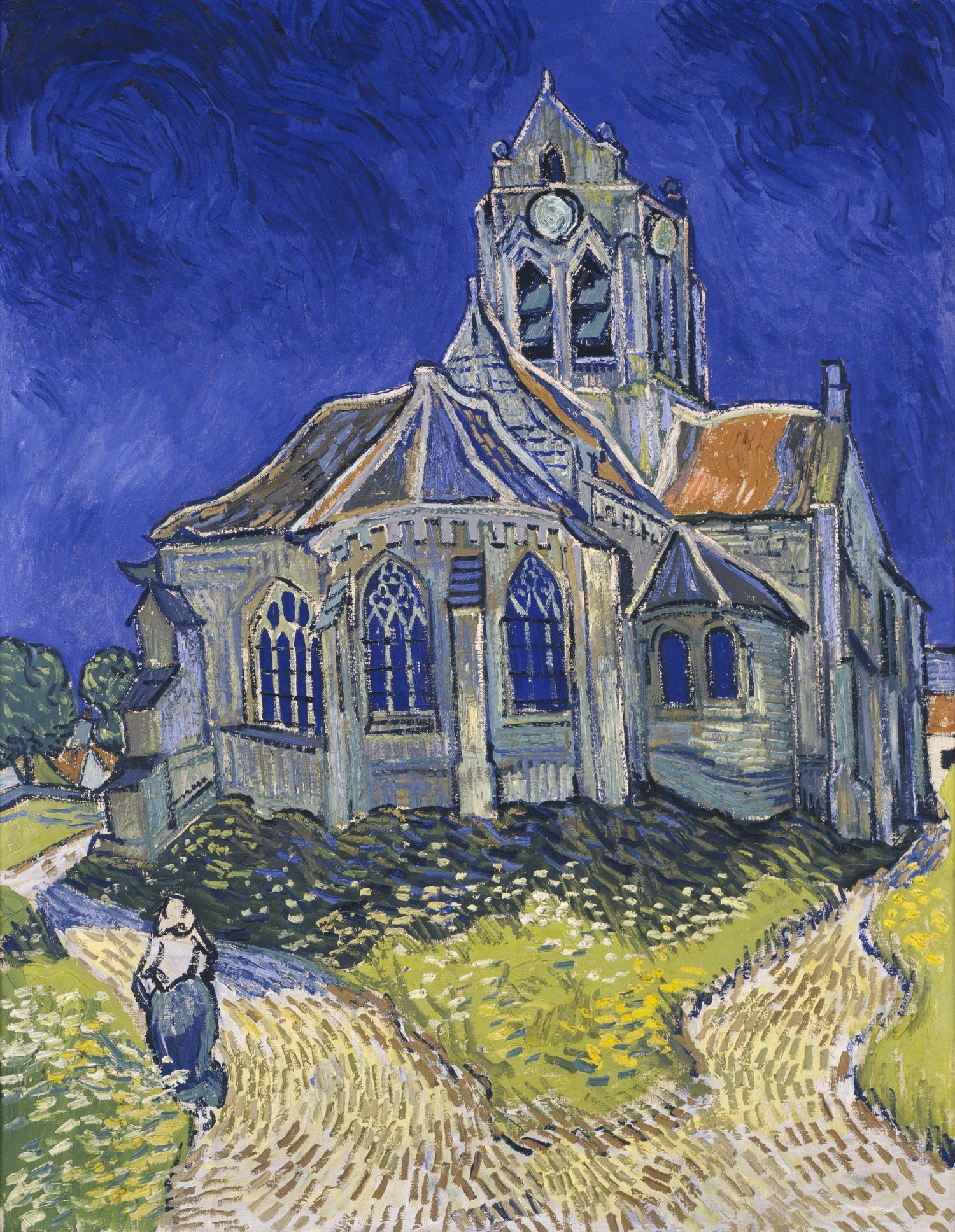
L'Église d’Auvers-sur-Oise, 1890
Vincent van Gogh’s "L’Église d’Auvers-sur-Oise, 1890" is a striking and emotive depiction of the Church of Auvers, a Gothic-style structure located in the small French village of Auvers-sur-Oise. Painted during the final months of van Gogh’s life, this artwork reflects his evolving artistic style, characterized by expressive brushwork, intense color contrasts, and a deeply personal emotional resonance. Unlike traditional architectural representations, van Gogh’s rendering of the church is dynamic and almost dreamlike. The building appears to sway under the movement of his bold, swirling brushstrokes, giving it an organic, almost surreal quality. The deep blue sky, streaked with violet and indigo hues, creates a stark contrast against the earthy reds and browns of the church’s roof, heightening the painting’s emotional intensity.
One of the most striking aspects of "L’Église d’Auvers-sur-Oise, 1890" is its perspective. Van Gogh paints the church from a slightly elevated angle, emphasizing its towering presence. The winding, forked path in the foreground leads the viewer’s eye toward the structure but also suggests uncertainty and disorientation. The lone figure in the lower left corner, dressed in blue, appears small and insignificant in comparison to the imposing architecture, evoking feelings of solitude and introspection. Van Gogh’s use of color and light is deeply symbolic in this painting. Unlike the warm, golden tones often associated with church interiors, the windows of this church are painted in a dark, almost lifeless hue. The absence of light from within suggests a sense of spiritual isolation, a theme that resonates with van Gogh’s own struggles with mental health and his search for meaning. The surrounding landscape, in contrast, is vibrant and full of movement, reinforcing the idea of nature as a source of life and energy.
This work reflects van Gogh’s signature Post-Impressionist style, where form and color are not merely used for realism but to convey deep emotion. The painting was inspired by the real church in Auvers, a place van Gogh frequently visited during his stay in the village. His unique interpretation of the structure transforms it from a simple religious building into a deeply expressive and psychological work of art. The painting is a testament to his ability to infuse everyday scenes with raw emotion, capturing the world through his deeply personal and visionary perspective.
